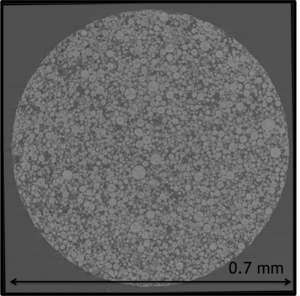Battery Micro Engineering
Lithium ion batteries (LIBs) have revolutionized mobile electronics and are well suited to enable new applications such as balancing the electric power grid and electro-mobility. LIBs with thick electrodes are favorable for these applications because the fraction of electrochemically inactive material is kept to a minimum and the energy density of the cell is maximized while the cost is minimized. However, the speed at which a LIB can be charged and discharged depends on electrode thickness, and manufacturers have to compromise between energy density and speed. A technology to fabricate thick electrodes with fast charge- and discharge rate capabilities would enable a substantial reduction in costs.
At the Laboratory for Nanoelectronics of Prof. Wood at ETHZ, we have developed a method to engineer the microstructure of LIB electrodes to improve the lithium ion transport. The improved lithium transport can be leveraged to create faster batteries, or to fabricate thicker, cheaper electrodes without compromising speed.
Detailed information: DownloadMaterial Views (PDF, 1013 KB)vertical_align_bottom

